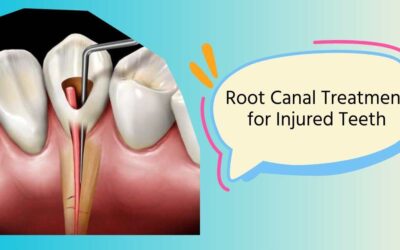Root canal treatment has been perceived as uncomfortable by many. Advances in dental technology have completely changed the process and it is not as uncomfortable as it is thought to be. These days less invasive root canal procedures are used, which improves procedure efficiency, patient comfort, and the preservation of more natural tooth structure. This blog examines these cutting-edge methods and the advantages it offers the patients.
What is Minimally Invasive Root Canal Treatment?
The ultimate goal of a minimally invasive root canal treatment is to extract the diseased pulp while retaining as much of the good tooth tissue as possible. Modern dental instruments and imaging technology enable dentists to execute these treatments precisely, minimizing discomfort and recuperation time.
The Benefits of Minimally Invasive Root Canal Techniques
There are various advantages to opting for minimally invasive techniques in root canal treatments. Here is a gist of it.
Preservation of Tooth Structure: More tooth structures were removed during traditional root canal treatment procedures. Not anymore. Long-term dental health is enhanced by minimally invasive procedures that try to preserve as much of the original tooth as possible.
Reduced Treatment Time: The amount of time spent in the dentist chair can be decreased by using contemporary instruments to accomplish the treatment more quickly and efficiently. This is advantageous to both patients and the dentists.
Less Discomfort: Patients are in less pain during and after the root canal procedure because less intrusive techniques and advanced anesthetic are employed.
Modern Tools and Techniques in Minimally Invasive Root Canal Treatment
-
Microscopic Endodontics
Using a microscope, a dentist can see the interior architecture of the tooth at a higher magnification. This definitely increases the precision in the root canal procedure and process. This obviously results in better results and more accurate root canal treatment.
- Cone Beam Computed Tomography (CBCT)
With the use of Cone Beam Computed Tomography (CBCT), a 3D imaging solution, the dentist can diagnose and treat complicated situations more successfully. This is because these imaging solutions offer the dentists a thorough image of the tooth’s root canals and surrounding tissues. The accuracy of CBCT imaging significantly reduces the amount of tooth structure that is needlessly removed.
- Ultrasonic Instruments
The root canals are shaped and cleaned using ultrasonic instruments. Their precise vibrations make the cleaning procedure less intrusive by allowing for efficient cleaning while conserving more of the healthy tooth structure.
Steps in a Minimally Invasive Root Canal Procedure
Although the process under minimally invasive root canal procedure varies depending on the patient’s condition, the following are the general steps:
- Diagnosis: 3D imaging like CBCT is used to assess the extent of the infection.
- Access and Cleaning: A small access point is made to clean the infected pulp. This is done with the aid of microscopes and ultrasonic tools.
- Filling and Sealing: After cleaning the root canal, the canals are filled with biocompatible material and sealed to prevent further infection.
Recovery Post Root Canal Treatment
A primary benefit of less invasive root canal procedure is their quicker recovery period. Because there is less damage to the tooth and the surrounding tissues, this generally results in less pain and swelling for the patient. Long-term success requires proper post-procedural care like regular dental checkups and good oral hygiene.
The minimally invasive root canal treatment methods guarantee patients receive the best care possible while keeping their original teeth since they have increased precision, decreased discomfort, and faster healing. Dentists may now provide patients undergoing root canal treatment with a more comfortable and effective option by using sophisticated technology. This move guarantees the best possible results and a more enjoyable experience overall.




